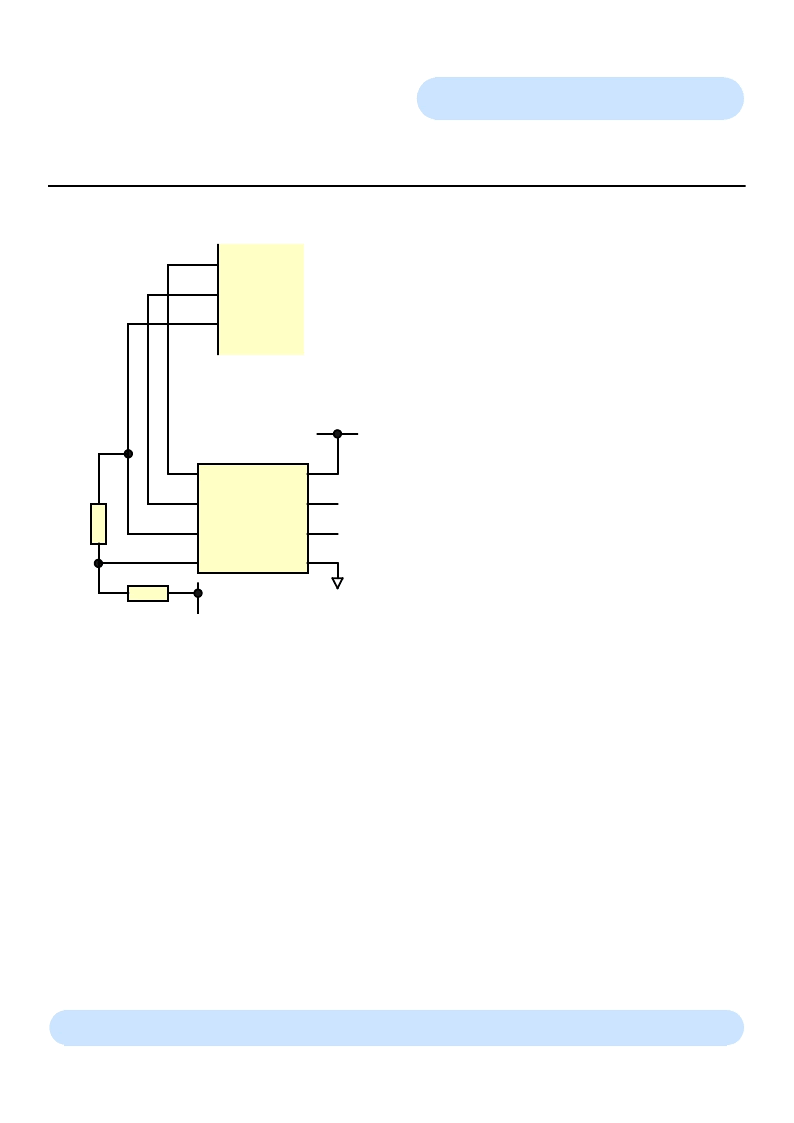- 您現(xiàn)在的位置:買賣IC網 > PDF目錄382970 > FT245BM (Electronic Theatre Controls, Inc.) FT245BM USB FIFO ( USB - Parallel ) I.C. PDF資料下載
參數資料
| 型號: | FT245BM |
| 廠商: | Electronic Theatre Controls, Inc. |
| 英文描述: | FT245BM USB FIFO ( USB - Parallel ) I.C. |
| 中文描述: | FT245BM的USB先進先出(USB端口-并行)集成電路 |
| 文件頁數: | 16/24頁 |
| 文件大小: | 505K |
| 代理商: | FT245BM |

DS245BL Version 1.6 Future Technology Devices Intl. Ltd. 2005
Page 16 of 24
FT245BL USB FIFO ( USB - Parallel ) I.C.
7.2 EEPROM Configuration
Figure 6
EEPROM Configuration
Figure 6 illustrates how to connect the FT245BL to the 93C46
(93C56 or 93C66) EEPROM. EECS (pin 32) is directly
connected to the chip select (CS) pin of the EEPROM. EESK
(pin 1) is directly connected to the clock (SK) pin of the
EEPROM. EEDATA (pin 2) is directly connected to the Data
In (Din) pin of the EEPROM. There is a potential condition
whereby both the Data Output (Dout) of the EEPROM
can drive out at the same time as the EEDATA pin of the
FT245BL. To prevent potential data clash in this situation,
the Dout of the EEPROM is connected to EEDATA of the
FT245BL via a 2.2 K resistor.
Following a power-on reset or a USB reset, the FT245BL will
scan the EEPROM to find out a) if an EEPROM is attached
to the Device and b) if the data in the device is valid. If both
of these are the case, then the FT245BL will use the data in
the EEPROM, otherwise it will use its built-in default values.
When a valid command is issued to the EEPROM from the
FT245BL, the EEPROM will acknowledge the command by
pulling its Dout pin low. In order to check for this condition, it
is necessary to pull Dout high using a 10K resistor. If the command acknowledge doesn’t happen then EEDATA will
be pulled high by the 10K resistor during this part of the cycle and the device will detect an invalid command or no
EEPROM present.
There are two varieties of these EEPROM’s on the market – one is configured as being 16 bits wide, the other is
configured as being 8 bits wide. These are available from many sources such as Microchip, ST Micro, ISSI etc. The
FT245BL requires EEPROM’s with a 16-bit wide configuration such as the Microchip 93LC46B device. The EEPROM
must be capable of reading data at a 1Mb clock rate at a supply voltage of 4.35V to 5.25V. Most available parts are
capable of this.
Check the manufacturers data sheet to find out how to connect pins 6 and 7 of the EEPROM. Some devices specify
these as no-connect, others use them for selecting 8 / 16 bit mode or for test functions. Some other parts have their
pinout rotated by 90
o
so please select the required part and its options carefully.
It is possible to “share” the EEPROM between the FT245BL and another external device such as an MCU. However,
this can only be done when the FT245BL is in its reset condition as it tri-states its EEPROM interface at that time. A
typical configuration would use four bits of an MCU IO Port. One bit would be used to hold the FT245BL reset (using
RESET#) on power-up, the other three would connect to the EECS, EESK and EEDATA pins of the FT245BL in
order to read / write data to the EEPROM at this time. Once the MCU has read / written the EEPROM, it would take
RESET# high to allow the FT245BL to configure itself and enumerate over USB.
EECS
EEDATA
32
FT245BM
EESK
1
2
2
CS
SK
DIN
DOUT
GND
NC
NC
VCC
EEPROM - 93C46 / 56 / 66
1
3
4
5
6
7
8
VCC
10k
2k2
VCC
相關PDF資料 |
PDF描述 |
|---|---|
| FT245BQ | FT245BQ USB FIFO ( USB - Parallel ) I.C. |
| FT6116 | 2K X 8 CMOS SRAM |
| FT8U100AX | FT8U100AX USB Compound Hub Controller |
| FTD1011 | Ultrahigh-Speed Switching Applications |
| FTD1012 | Load Switching Applications |
相關代理商/技術參數 |
參數描述 |
|---|---|
| FT245BM-TRAY | 功能描述:USB 接口集成電路 Obsolete See FT245RL RoHS:否 制造商:Cypress Semiconductor 產品:USB 2.0 數據速率: 接口類型:SPI 工作電源電壓:3.15 V to 3.45 V 工作電源電流: 最大工作溫度:+ 85 C 安裝風格:SMD/SMT 封裝 / 箱體:WLCSP-20 |
| FT245BQ | 制造商:未知廠家 制造商全稱:未知廠家 功能描述:FT245BQ USB FIFO ( USB - Parallel ) I.C. |
| FT245BQ-REEL | 功能描述:USB 接口集成電路 USB to Parallel FIFO IC QFN-32 RoHS:否 制造商:Cypress Semiconductor 產品:USB 2.0 數據速率: 接口類型:SPI 工作電源電壓:3.15 V to 3.45 V 工作電源電流: 最大工作溫度:+ 85 C 安裝風格:SMD/SMT 封裝 / 箱體:WLCSP-20 |
| FT245R | 制造商:FTDI 制造商全稱:FTDI 功能描述:USB FIFO I.C. Incorporating FTDIChip-ID⑩ Security Dongle |
| FT245R_10 | 制造商:FTDI 制造商全稱:FTDI 功能描述:USB FIFO IC - Single chip USB to parallel FIFO bidirectional data transfer interface |
發(fā)布緊急采購,3分鐘左右您將得到回復。